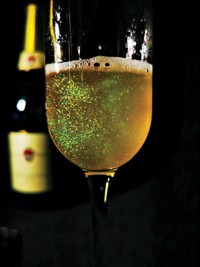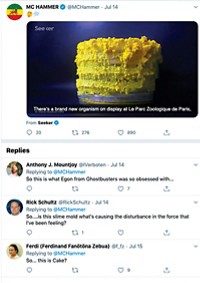Advertisement
Grab your lab coat. Let's get started
Welcome!
Welcome!
Create an account below to get 6 C&EN articles per month, receive newsletters and more - all free.
It seems this is your first time logging in online. Please enter the following information to continue.
As an ACS member you automatically get access to this site. All we need is few more details to create your reading experience.
Not you? Sign in with a different account.
Not you? Sign in with a different account.
ERROR 1
ERROR 1
ERROR 2
ERROR 2
ERROR 2
ERROR 2
ERROR 2
Password and Confirm password must match.
If you have an ACS member number, please enter it here so we can link this account to your membership. (optional)
ERROR 2
ACS values your privacy. By submitting your information, you are gaining access to C&EN and subscribing to our weekly newsletter. We use the information you provide to make your reading experience better, and we will never sell your data to third party members.
Education
Newscripts
Chemical Artistry, Microwave Oven Astronomy, Scientific Musicality
by Jyllian Kemsley
May 4, 2015
| A version of this story appeared in
Volume 93, Issue 18

Veronica Berns faced a common graduate student challenge: how to explain what you’re doing to a nonchemist family member or friend.
Her solution? A comic book. “I tried to come up with something that would convey the ideas and purpose and motivation without using technical jargon,” says Berns, who got her Ph.D. from the University of Wisconsin, Madison, last year and now works as a research scientist for chemical company UOP.
Berns’s artistry describes her research in Daniel C. Fredrickson’s lab to understand the three-dimensional structures that form when metals are mixed together.
“In crystals, atoms pack orderly and tightly, like oranges in a grocery store display,” Berns writes in the comic. “Crystals are organized and repeat themselves. In every direction. Predictably. This allows us to summarize a whole big crystal in one tiny box: the unit cell.”
She told her lab group about the project when it was about halfway done. Fredrickson became a big proponent and convinced her to include it as the final chapter in her thesis, she tells Newscripts.
In January, she launched a Kickstarter campaign to print the comic book on its own. She hoped to raise $5,965 and did that within a week; as of C&EN press time, she was up to $14,400. She’s received messages from people saying things like, “My daughter’s interested in chemistry and I don’t know anything about it, maybe we can read this together,” she says. “Those have been the most rewarding e-mails to get,” Berns notes. “I’m happy to be able to be the instigator for that conversation that they wanted to have.”
While Berns worked to explain her science in common language, astronomers were working to discover a common source for perytons. Perytons are transient, 250-millisecond bursts of radio signals detected at observatories in Australia and Switzerland. Because perytons typically occurred on weekdays during office hours, the scientists were pretty sure they were of human origin. But what precisely was the perytons’ provenance?

The key lay in linking the perytons with other signals around 2.3 to 2.5 gigahertz, a frequency at which microwave ovens are known to emit. That led to a set of tests spearheaded by Emily Petroff of Swinburne University of Technology, in Australia, that involved heating mugs of water in microwaves at that country’s CSIRO Parkes Observatory.
But perytons didn’t appear when scientists just ran the ovens. It wasn’t until someone opened a microwave door before the timer ran out that the source of perytons was conclusively identified (arXiv:1504.02165 [astro-ph.IM]).
Last year, Newscripts featured the “Song of the Chemist,” a chemically themed ditty by 19th-century composer George F. Root (C&EN, May 5, 2014, page 40). Lew Naylor of Apple Environmental Services and Indiana’s Goshen College requested the words and music, then worked with students—a male quartet and videographer—to create a delightful music video. To view it, go to cenm.ag/chemistsong.
Jyllian Kemsley wrote this week’s column. Please send comments and suggestions to newscripts@acs.org.





Join the conversation
Contact the reporter
Submit a Letter to the Editor for publication
Engage with us on Twitter